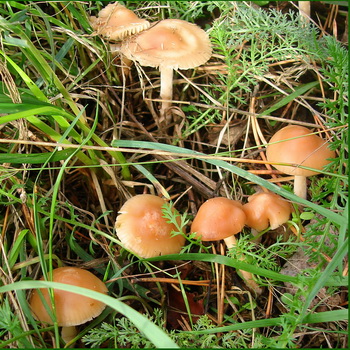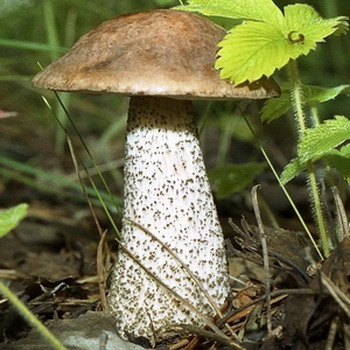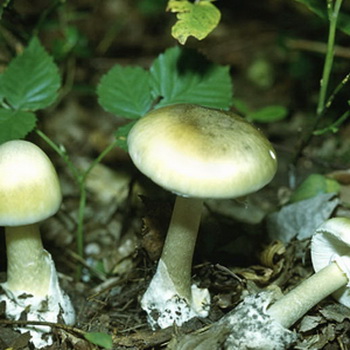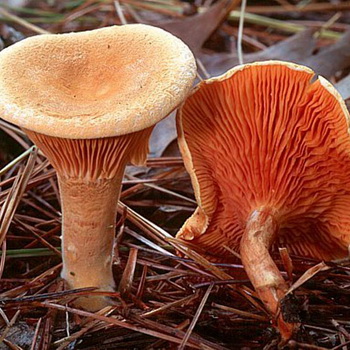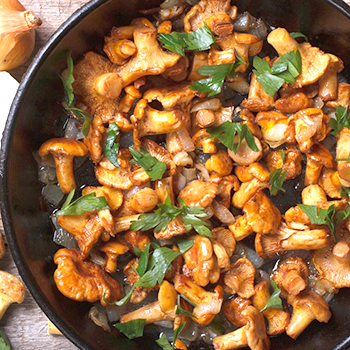The names of dangerous twins of autumn mushrooms, photos and videos of false poisonous mushrooms
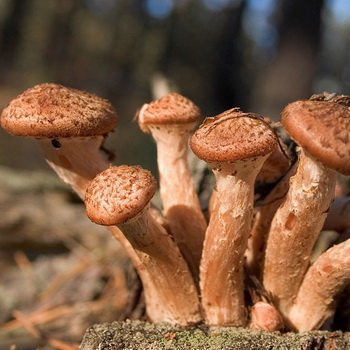 Honey mushrooms are quite common mushrooms, there are several varieties of them. Autumn species of honey agaric are considered one of the most popular. They are highly regarded for their taste and versatility.
Honey mushrooms are quite common mushrooms, there are several varieties of them. Autumn species of honey agaric are considered one of the most popular. They are highly regarded for their taste and versatility.
According to some external signs, edible honey agaric species can resemble poisonous ones. They can be easily confused if you do not have an idea of the characteristic differences that allow you to identify a real mushroom. Armed with the right information, however, you can make your harvest safe. So, it must be remembered that the autumn honey fungus also has a poisonous twin. I must say that the risk of meeting such an inedible specimen in the forest is quite high. However, this does not discourage those who know how to distinguish a good edible mushroom from a poisonous relative.
All dangerous twins of the autumn honey agaric are called "false mushrooms". This is a collective phrase, because it can be attributed to several species that are similar to real autumn mushrooms. They can be confused not only by their appearance, but also by the place of growth. The fact is that false mushrooms grow in the same places as real ones: on stumps, fallen tree trunks or branches. In addition, they bear fruit at the same time, meeting in whole groups.
We offer you to see a photo of the autumn mushroom and its dangerous counterpart - the false hair of sulfur-yellow and brick-red. In addition, the above description of the above species will help you not to get lost in the forest and correctly identify the edible mushroom.
Sulfur-yellow poisonous twin of the autumn mushroom
One of the main twin mushrooms of the autumn honey fungus is the sulfur-yellow false foam mushroom. This species is a dangerous "guest" for your table, as it is considered poisonous.
Latin name:Hypholoma fasciculare.
Genus:Hypholoma.
Family:Strophariaceae.
Hat: 3-7 cm in diameter, bell-shaped, which becomes prostrate as the fruiting body matures. The color of the autumn mushroom double corresponds to the name: gray-yellow, yellow-brown. The center of the cap is darker, sometimes reddish-brown, but the edges are lighter.
Leg: smooth, cylindrical, up to 10 cm high and up to 0.5 cm thick. Hollow, fibrous, light yellow in color.


Pulp: light yellow or whitish, with a pronounced unpleasant odor and bitter taste.
Plates: thin, densely spaced, often adherent to the peduncle. At a young age, the plates are sulfur-yellow, then acquire a greenish tint, and immediately before dying off they become olive-black.
Edibility: poisonous mushroom. When eaten, it causes poisoning, up to fainting.
Spreading: practically throughout the territory of the Russian Federation, except for permafrost zones. It grows in whole groups from mid-June to early October. Occurs on decaying deciduous and coniferous tree species. Also grows on tree stumps and soil near tree roots.


In the photo, the autumn honey fungus and a dangerous double called the sulfur-yellow false hair. As you can see, the inedible mushroom has a brighter color and there is no characteristic ring-skirt on its stem, which all edible fruit bodies have.
Dangerous brick-red double of the autumn mushroom (with video)
Another representative of false species of honey agaric, the edibility of which is still being discussed. Many believe that it is poisonous, others say the opposite. Still, going into the forest, it must be remembered that the autumn mushroom and its dangerous counterpart have a number of differences.
Latin name:Hypholoma sublateritium.
Genus:Hypholoma.
Family:Strophariaceae.


Hat: spherical, opens with age, from 4 to 8 cm in diameter (sometimes up to 12 cm). Thick, fleshy, red-brown, rarely yellow-brown.The center of the cap is darker, and white flakes can often be seen around the edges - the remnants of a private bedspread.
Leg: flat, dense and fibrous, becomes hollow and curved over time. Up to 10 cm in length and 1-1.5 cm in thickness. The upper part is bright yellow, the lower one is red-brown. Like other false species, the brick-red honeydew lacks the ring-skirt, which is the main difference between the edible fruiting body.


Pulp: dense, whitish or dirty yellow, bitter in taste and unpleasant in smell.
Plates: frequent, narrowly accrete, light gray or yellow-gray. With age, the color changes to gray-olive, sometimes with a purple tint.
Edibility: popularly considered a poisonous mushroom, although in most sources, brick-red honey mushrooms are classified as conditionally edible mushrooms.
Spreading: territory of Eurasia and North America. It grows on decaying stumps, branches and trunks of deciduous trees.
Watch also a video showing the autumn mushroom and its dangerous counterparts:






